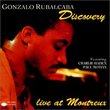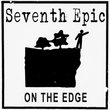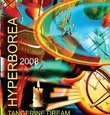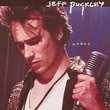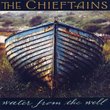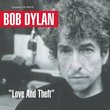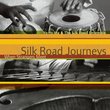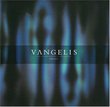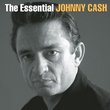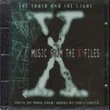| All Artists: Tangerine Dream Title: White Eagle Members Wishing: 2 Total Copies: 0 Label: Emd Int'l Release Date: 5/17/1994 Album Type: Import Genres: Dance & Electronic, Alternative Rock, New Age, Pop, Rock Styles: Ambient, Electronica, Meditation, Progressive, Progressive Rock Number of Discs: 1 SwapaCD Credits: 1 UPCs: 724383944422, 0724383944453 |
Search - Tangerine Dream :: White Eagle
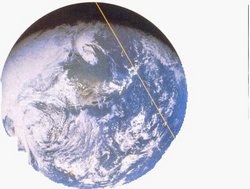 | Tangerine Dream White Eagle Genres: Dance & Electronic, Alternative Rock, New Age, Pop, Rock
|
Larger Image |
CD DetailsSimilar CDs
Similarly Requested CDs
|
CD Reviews?Ricochet? revisited Steve Benner | Lancaster, UK | 07/23/2000 (4 out of 5 stars) "Tangerine Dream's 1982 release "White Eagle" was the first to give Johannes Schmoelling the major compositional credit, shared mostly with Chris Franke, with Edgar Froese taking something a back-seat for once.The 20-minute major work, `Mojave Plan', starts slowly as a series of loosely structured echoing clanks and electronic wailings until a burst of sequencer-driven percussion ushers in a wash of synthesised string sounds and a strengthening sequencer beat. The opening screams and isolated percussion crashes return throughout the piece, but in a more ordered manner, to decorate a series of delightful synthesiser melodies in a characteristically meticulously constructed number. A synthetic horn line introduces a more melancholy tone for a time, with dancing piano and guitar-like voices circling around it, before a percussion-led descent into sonic chaos throws things out of kilter for a time. It is not long before the drums restore order again, though, and another jolly synthesiser tune introduces another heavy sequencer-drive section. This turns very like "Ricochet", with its potent percussion, heavy beat and reverbed vocal splashes. The constantly changing mix of synthesiser voices, sequenced bass and haunting mellotron tones is classic Tangerine Dream at their very best, complete with huge closing string chords of almost orchestral quality (just about their last ever grand gesture of the old style, as it turned out).Although rather less than 4 minutes in duration, `Midnight in Tula' is also very reminiscent of "Ricochet" with its massive reverbed sound, and emphasis on rich percussive voices and a fast, driving bass-synth and drum beat, overlaid with vocal stabs and slaps. The following `Convention of the 24' is moodier and more like the band's brooding soundtrack work for "Thief" or "Flashpoint". The lurching sequencer beat, with which it starts, sustains the track for almost a full ten minutes, pausing only briefly for a soft flute-like melody to play out its mournful message in the middle. The main beat rises again amidst a bright guitar voice to join an absolutely cracking rattling percussion figure which hammers its message home in a far from subtle manner, subverting all to its pulse before the end. The peaceful flute voice wins out eventually though, winding the track to a gentle conclusion amidst the singing of a heavenly mellotron choir.The final 4-and-a-half minute title track plinks and plonks its sequencer-powered path through more dazzling (and resonating) honey-toned synthesiser playing, with more noisy percussion stabs and vocal stutterings and splutterings aplenty. This is all presented in a most exquisite fashion, of course, although to my mind, it seems to be no sooner underway properly than it fades to silence, leaving me at least hankering after more. At just 38 minutes overall, this disc is pitifully short, but the standard of the music-making on it cannot be faulted. Nor can the production quality of this remastered `Definitive Edition', with all of the major sections of `Mojave Plan' properly indexed: highly recommended." Second real 80s TD outing is brief, but good for the most pa M. B. Link | USA | 07/07/2005 (4 out of 5 stars) "White Eagle(1982). Tangerine Dream's 16th(?) album. As a brief history, Germany-based-group Tangerine Dream started off in the late 60s as a sort of experimental rock 'n roll act. Very quickly they ditched the typical rock format in favor of a more instrumental, avant-garde, freeform approach to the music, using various instruments but gradually incorporating synthesizers into the mix. Aside from other early 70s electronic bands like Kraftwork, TD were among the first to heavily incorporate synthesizers and keyboards into the music as a main focus. As a result, they churned out many trippy, atmospheric albums throughout the decade and built up a solid fanbase. It's fun to listen to all the albums and hear how synthesizer technology has improved and changed over the years. Then once the 80s dawned upon the band, they began to (slightly) decrease the lengths of the songs and add rhythmic structures to them, thus helping to make their newer music more palatable to the public. They also started creating movie scores for famous films such as Risky Business, Thief, and Firestarter. One interesting fact to note is that TD has more albums than probably ANYBODY in existence! They usually put out about 1-2 albums per year, so for as long as they've been around, that's like nearly 50 albums! Also of note is that their "live" albums all contain original material, and thus count as actual (out of the)studio albums in chronology. Anyways, I first came across TD about a year ago when searching for soundtracks among famous musicians who create movie scores. One of these critically-hailed groups was none other than TD, so I figured that I should check them out in hopes of finding some great melodic instrumental work. So of all the albums, I randomly picked WE to be my starting point, in hopes that it would do TD's reputation as much justice as I have heard about. In most ways, WE is a direct continuation of the 1981 release Exit's sound. A lot of the same keyboards and synthesizers were incorporated from that album and thus this album picks up right where Exit left off. It bears a strong keyboard reverb sound similar to the keyboards found in Rush's Signals album, which came out right around the same time. It's clearly different from their mid 70's era, so die-hard fans of those albums might not like this. The first couple minutes of 'Mojave Plan' are just aimless noises that should be skipped and clearly don't start the album off well, but once the 2:40 mark hits, the actual music picks up and takes you through several melody driven-movements done in different tempos. By the end of its 19+ minutes, I was already a fan. Next up is the high-energy 'Midnight In Tula', one of my all-time favorite short-TD tracks. It reminds me of a high-speed chase scene you would see in any 80s action movie complete with a really cool "siren" synthesizer effect in a couple of spots. Then, 'Convention Of The 24' is sort of a subtley intricate, yet repeating 7-minute outing that brings earlier TD to mind, most notably Tangram(1980). The title track was the only one to gain any sort of attention from the album (why??), as it is the lightest theme giving a slight look at TD's future outings. It's a pretty noteworthy and mandatory TD listen. Replayability: Medium to low. Not as much as other 80s TD albums, but it does get played from time to time. As awesome of an introduction as WE was to me, I'll have to take off a star for the fact that its brevity (4 tracks, less than 40 minutes) leaves one to believe that more music could have been made. Of course, there is nothing wrong with quality over quantity, it's just that its lack of length is more noticeable on WE than on other releases. It has its moments of brilliance among other places, and should not be skipped by fans. It may not be the best place to start for 80s TD (in that case, I'll point you in the direction of Exit(1981) and Underwater Sunlight(1986)), but if you like keyboards and synthesizers played out into a well-constructed instrumental score, then WE will not disappoint. HIGHLY RECOMMENDED. 80's TD fans should look into: -Exit(1981), Thief(1981), Logos(1982), Hyperborea(1983), Holland(1984), Le Parc(1985), Underwater Sunlight(1986), Green Desert(1973), and Tyger(1987) 70's TD fans, if you don't like 80s TD's sound, then you should stay away and instead get: -Phaedra(1974), Rubycon(1975), Stratosphere(1976), Encore(1977), Force Majure(1979), and Tangram(1980)." Superb! However... Neil Thompson | Birkenhead, Wirral United Kingdom | 08/30/2000 (4 out of 5 stars) ""White Eagle" is a particularly interesting TD release to review in the context of what came before and after. Indulge me :-) The previous year's studio release was "Exit" an album so bristling with new ideas, both sonically and compositionally that it must be seen as a blueprint for synth pop and electronic music from then on. (What was anyone else doing at the time? Jarre released "Magnetic Fields" which is similar in tempo but hopelessly niave in comparison; only Kraftwerk were in the same ballpark)So along comes "White Eagle" and you could reasonably expect to get more new ideas, more new influences and yet more synthesizer innovation, but this is simply not the case. While I love the album, it's not nearly as forward thinking as "Exit" and instrumentally speaking, it's not as complex as the live set "Logos" that immediately followed. One would expect more without the technical limitations of live performance and the freedom of the studio environment...But I digress; "Mojave Plan" is the longest piece here and I agree with one of my fellow reviewers, who touches on the similarities with "Ricochet"; particularly the trademark whispering towards the end of the track. Elsewhere there are some great sequences to enjoy, but the track is somewhat lacking in that ethereal mysticism that TD seem able to wash their music with."Midnight In Tula" sounds to me like a track written for soundtrack work; owners of "Antique Dreams" will recognise similar sounding tracks apparently for a German tv series and while it is catchy enough in it's own right I think it sounds out of place on this album."Convention Of The "24" is another masterful piece of sequencing; this was where the TD of the 80's stood tall; a catchy tune here, a throwaway melody there but with voicings so otherworldly that even the most mundane of compositions sounds strange and new. Owners of "Sohoman" the live set from Australia recently released will be slightly disappointed to find that the live version is virtually identical to the original studio work... still.The finest track on this album is without doubt the title cut. "White Eagle" is sublime in it's simplicity; devastating in it's minimlism and astounding in it's delivery. I've heard Froese's re-worked version of this on the "Tangents" box set (thanks, Christian!) and it is a disgrace. My score would be three stars for the rest of the album and five for this moment of genius. Buy this album for this one track; the finest four and a half minutes of the Eighties."
|

 Track Listings (4) - Disc #1
Track Listings (4) - Disc #1